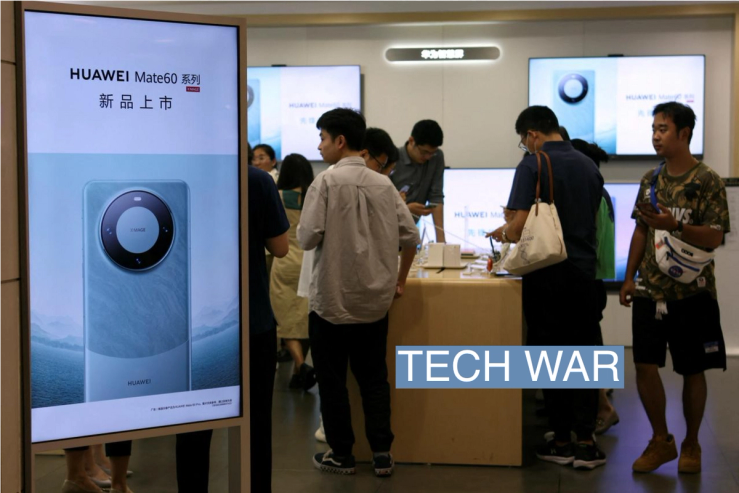The News
A new Huawei smartphone is drawing intensifying U.S. scrutiny, with some lawmakers suggesting the Chinese chipmaker SMIC may have run afoul of U.S. rules in supplying chips to Huawei for the new product.
“I am very concerned because the industry perception was that China had not been able to get down to a 7-nanometer chip,” Senate Intelligence Committee Chairman Mark Warner, D-Va. told Semafor, questioning whether SMIC may have used “sanctioned Western technology or materials” to produce the chips now powering the Huawei Mate 60 Pro. SMIC and Huawei both continue to license some technology from U.S. companies, though they face substantial restrictions.
“This is an area that I think might need additional sanctions,” he added.
Rep. Mike Gallagher, R-Wis., who chairs the House select committee on China, said in a statement that SMIC may have violated the Commerce Department’s Foreign Direct Product Rule. He called for ending “all U.S. technology exports to both Huawei and SMIC to make clear any firm that flouts U.S. law and undermines our national security will be cut off from our technology.”
House Foreign Affairs Committee Chairman Michael McCaul, R-Texas, who suggested Wednesday that SMIC may have violated existing U.S. sanctions, told Semafor in a statement that his committee would be requesting a briefing from the Commerce Department’s Bureau of Industry and Security, which oversees export controls, including those on cutting-edge chips and technology used to make them.
Warner, too, said he was in touch with the administration and expected to receive a briefing on the development.
The White House said this week it is also seeking more information on the “character and composition” of the chip powering the Huawei Mate 60 Pro, which was released last week.
State-backed Chinese outlets have heralded the new chip design as a sign of the semiconductor industry’s resilience amid U.S. sanctions.
Neither Huawei nor SMIC returned requests for comment.
Know More
Recent analysis indicated that the phone was made with a 7-nanometer processor produced by SMIC, which has been on the Commerce Department’s Entity List and as a result subject to U.S. sanctions since the end of the Trump administration. The sanctions on SMIC limit the company’s ability to acquire U.S. technology, while existing sanctions on Huawei restrict the company from obtaining goods made with American technology.
The phone development has raised doubts about the effectiveness of the U.S. effort to curb China’s access to advanced chips used in weapons, artificial intelligence, and other advanced technology.
“This shouldn’t have been a surprise. The Chinese were just faster than in the past,” Jim Lewis, a technology expert at the Center for Strategic and International Studies, told Semafor. “It happened with satellites, it happened with computers, it happened with encryption, it happened with machine tools back in the Reagan administration. You put on tight export controls, the other guys don’t give up and go home.”
At the same time, Lewis said it was worth the U.S. looking into potential violations of its own rules, given that SMIC may have used U.S. equipment to produce the chips. Equipment used to manufacture the more advanced chips is made in the U.S., Japan, and the Netherlands, all of which have placed restrictions on exports of chipmaking equipment to China.
Lewis said officials could reverse engineer the phone to examine how the chip was made and potentially determine where SMIC procured the equipment from.
“It’s difficult to believe they did this entirely on their own,” he said. “But it’s also not impossible.”


